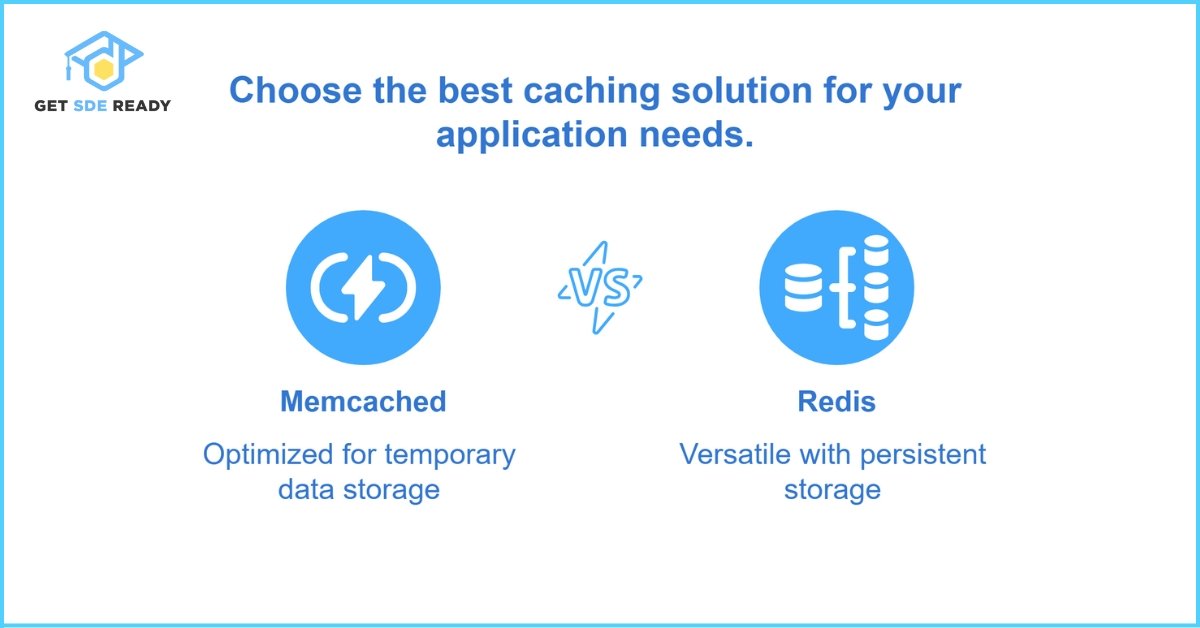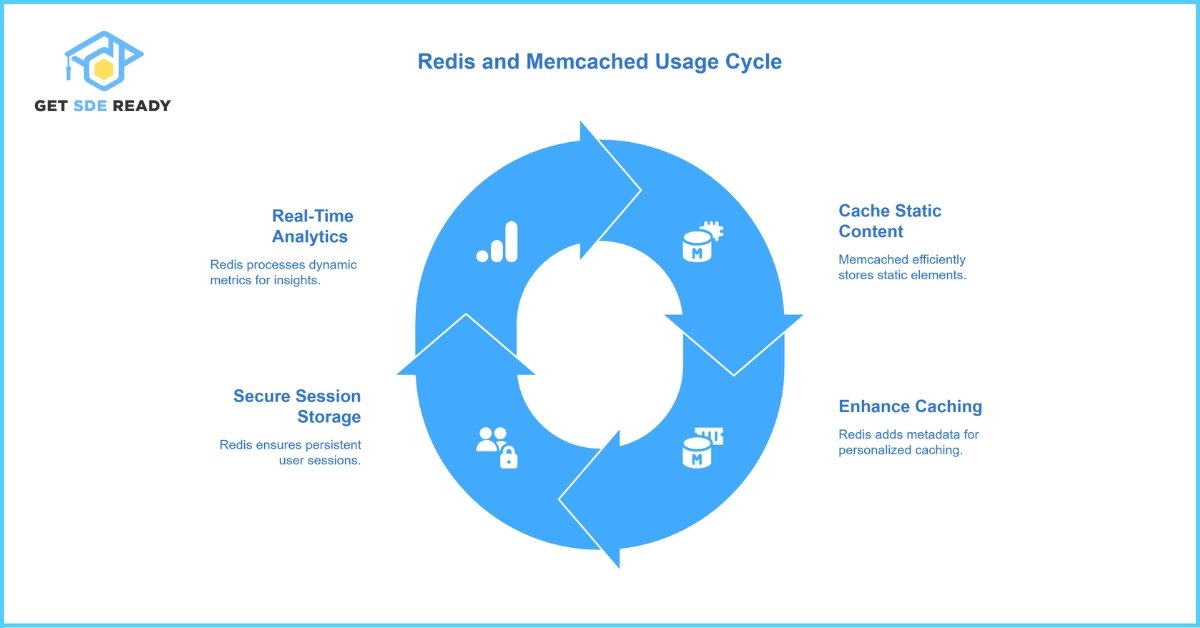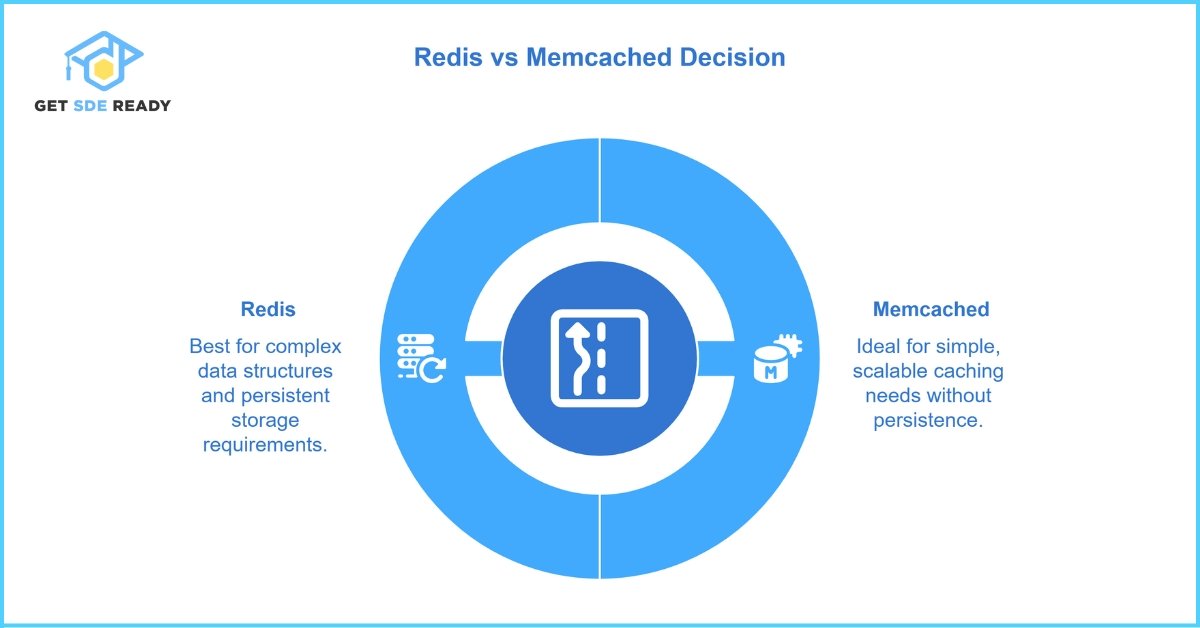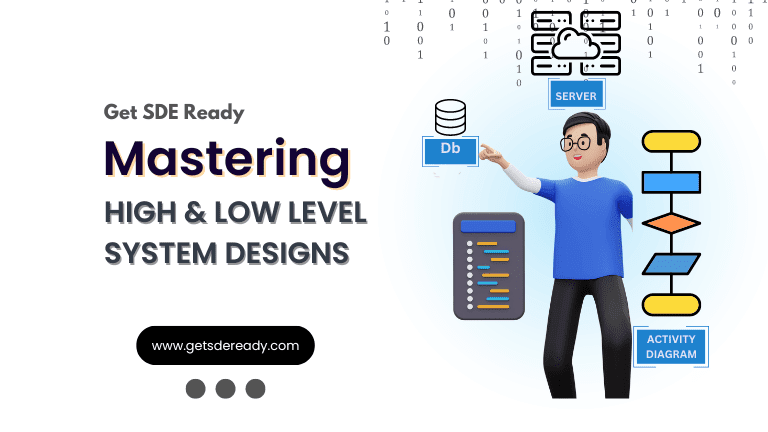System Design Interview Questions
- Adobe System Design Interview Questions
- Top Atlassian System Design Interview Questions
- Top Amazon System Design Interview Questions
- Top Microsoft System Design Interview Questions
- Top Meta (Facebook) System Design Interview Questions
- Top Netflix System Design Interview Questions
- Top Uber System Design Interview Questions
- Top Google System Design Interview Questions
- Top Apple System Design Interview Questions
- Top Airbnb System Design Interview Questions
- Top 10 System Design Interview Questions
- Mobile App System Design Interview Questions
- Top 20 Stripe System Design Interview Questions
- Top Shopify System Design Interview Questions
- Top 20 System Design Interview Questions
- Top Advanced System Design Questions
- Most-Frequented System Design Questions in Big Tech Interviews
- What Interviewers Look for in System Design Questions
- Critical System Design Questions to Crack Any Tech Interview
- Top 20 API Design Questions for System Design Interviews
- Top 10 Steps to Create a System Design Portfolio for Developers
Introduction to High-Level System Design
System Design Fundamentals
- Functional vs. Non-Functional Requirements
- Scalability, Availability, and Reliability
- Latency and Throughput Considerations
- Load Balancing Strategies
Architectural Patterns
- Monolithic vs. Microservices Architecture
- Layered Architecture
- Event-Driven Architecture
- Serverless Architecture
- Model-View-Controller (MVC) Pattern
- CQRS (Command Query Responsibility Segregation)
Scaling Strategies
- Vertical Scaling vs. Horizontal Scaling
- Sharding and Partitioning
- Data Replication and Consistency Models
- Load Balancing Strategies
- CDN and Edge Computing
Database Design in HLD
- SQL vs. NoSQL Databases
- CAP Theorem and its Impact on System Design
- Database Indexing and Query Optimization
- Database Sharding and Partitioning
- Replication Strategies
API Design and Communication
Caching Strategies
- Types of Caching
- Cache Invalidation Strategies
- Redis vs. Memcached
- Cache-Aside, Write-Through, and Write-Behind Strategies
Message Queues and Event-Driven Systems
- Kafka vs. RabbitMQ vs. SQS
- Pub-Sub vs. Point-to-Point Messaging
- Handling Asynchronous Workloads
- Eventual Consistency in Distributed Systems
Security in System Design
Observability and Monitoring
- Logging Strategies (ELK Stack, Prometheus, Grafana)
- API Security Best Practices
- Secure Data Storage and Access Control
- DDoS Protection and Rate Limiting
Real-World System Design Case Studies
- Distributed locking (Locking and its Types)
- Memory leaks and Out of memory issues
- HLD of YouTube
- HLD of WhatsApp
System Design Interview Questions
- Adobe System Design Interview Questions
- Top Atlassian System Design Interview Questions
- Top Amazon System Design Interview Questions
- Top Microsoft System Design Interview Questions
- Top Meta (Facebook) System Design Interview Questions
- Top Netflix System Design Interview Questions
- Top Uber System Design Interview Questions
- Top Google System Design Interview Questions
- Top Apple System Design Interview Questions
- Top Airbnb System Design Interview Questions
- Top 10 System Design Interview Questions
- Mobile App System Design Interview Questions
- Top 20 Stripe System Design Interview Questions
- Top Shopify System Design Interview Questions
- Top 20 System Design Interview Questions
- Top Advanced System Design Questions
- Most-Frequented System Design Questions in Big Tech Interviews
- What Interviewers Look for in System Design Questions
- Critical System Design Questions to Crack Any Tech Interview
- Top 20 API Design Questions for System Design Interviews
- Top 10 Steps to Create a System Design Portfolio for Developers
Introduction to High-Level System Design
System Design Fundamentals
- Functional vs. Non-Functional Requirements
- Scalability, Availability, and Reliability
- Latency and Throughput Considerations
- Load Balancing Strategies
Architectural Patterns
- Monolithic vs. Microservices Architecture
- Layered Architecture
- Event-Driven Architecture
- Serverless Architecture
- Model-View-Controller (MVC) Pattern
- CQRS (Command Query Responsibility Segregation)
Scaling Strategies
- Vertical Scaling vs. Horizontal Scaling
- Sharding and Partitioning
- Data Replication and Consistency Models
- Load Balancing Strategies
- CDN and Edge Computing
Database Design in HLD
- SQL vs. NoSQL Databases
- CAP Theorem and its Impact on System Design
- Database Indexing and Query Optimization
- Database Sharding and Partitioning
- Replication Strategies
API Design and Communication
Caching Strategies
- Types of Caching
- Cache Invalidation Strategies
- Redis vs. Memcached
- Cache-Aside, Write-Through, and Write-Behind Strategies
Message Queues and Event-Driven Systems
- Kafka vs. RabbitMQ vs. SQS
- Pub-Sub vs. Point-to-Point Messaging
- Handling Asynchronous Workloads
- Eventual Consistency in Distributed Systems
Security in System Design
Observability and Monitoring
- Logging Strategies (ELK Stack, Prometheus, Grafana)
- API Security Best Practices
- Secure Data Storage and Access Control
- DDoS Protection and Rate Limiting
Real-World System Design Case Studies
- Distributed locking (Locking and its Types)
- Memory leaks and Out of memory issues
- HLD of YouTube
- HLD of WhatsApp
Redis vs Memcached: Key Differences, Use Cases, and Best Practices for High-Performance Developers
Introduction
When building high-performance, scalable applications, selecting the right in-memory data store is critical for optimizing speed and reliability. Redis and Memcached are two industry-leading caching systems that significantly reduce latency and enhance user experience. In this comprehensive guide, we detail the features, real-world applications, and expert insights on each solution—ideal for developers, system architects, and tech enthusiasts looking for proven caching strategies. For foundational development knowledge, explore our beginner-friendly crash course on modern development tools.
What Are Redis and Memcached?
Both Redis and Memcached are in-memory key-value stores designed to accelerate data retrieval by storing information in RAM. They serve as high-speed caching engines that power dynamic web applications and microservices. Below is a detailed comparison:
- Memcached: A lightweight, high-speed caching solution optimized for temporary data storage, such as session management and HTML page caching.
- Redis: A versatile data store that supports complex data structures—including lists, sets, and hashes—with persistent storage options, making it well-suited for real-time analytics and messaging systems.
To expand your knowledge on data handling and structures, consider enrolling in our DSA course which covers core concepts in backend development.

Redis vs Memcached: Core Feature Comparison
Understanding the distinct features of each caching system is essential for deploying the right solution. Below is an easy-to-read feature matrix:
Feature | Memcached | Redis |
Data Types | String-based values | Strings, Lists, Sets, Hashes, and more |
Persistence | No (volatile data without disk backups) | Yes (with disk-based backups and AOF) |
Scalability | Simple, distributed caching architecture | Single-threaded design with clustering support |
Use Cases | Basic caching for static content | Advanced caching, analytics, and real-time processing |
Why Data Structures Matter for Application Performance
Redis supports a variety of complex data structures that enable innovative application use cases such as leaderboards, real-time notifications, and messaging. Its flexibility allows developers to design features like dynamic session management and customizable caching mechanisms. Learn more about implementing these advanced techniques in our Master DSA and Web Development program for in-depth training.
Real-World Scenarios: Optimal Use of Redis and Memcached
1. Caching Web Pages for Faster Load Times
For high-traffic news sites or content-heavy platforms, reducing database strain is crucial:
- Memcached: Efficiently stores static content including headlines, images, and basic HTML pages.
- Redis: Enhances caching by incorporating additional metadata such as user preferences using its advanced hash capabilities.
2. Secure Session Storage for E-Commerce Platforms
Reliable session management is paramount for maintaining user experience and secure transactions in online stores:
- Memcached: Ideal for temporary caching; however, it may lose session data upon server restarts.
- Redis: Ensures data persistence so that user sessions remain stable, reducing risks like cart abandonment.
Elevate your understanding of session management and caching optimization in our Web Development Course.
3. Real-Time Analytics and Metrics Tracking
For social media platforms and dynamic content sites, real-time data processing is non-negotiable:
- Redis: Processes dynamic metrics such as trending topics, hashtag rankings, or user engagement by leveraging its sorted sets.
- Memcached: Less effective for continuous data updates and real-time analytics.
For advanced techniques in data analysis and visualization, explore our Data Science Course.

Choosing Between Redis and Memcached: Expert Recommendations
When to Use Memcached
- Prioritize simplicity and horizontal scalability.
- Best suited for scenarios where data persistence is not critical, such as caching temporary web content.
When to Use Redis
- Require advanced data structures or persistent storage.
- Building real-time systems like chat applications, dashboards, or analytics platforms that demand rapid, reliable data processing.
Preparing for technical interviews? Check our Top 20 DSA Interview Questions guide for practical problem-solving techniques.

Industry-Specific Insights and Use Cases
Major technology companies leverage caching systems uniquely to power their platforms:
- Meta: Implements Redis for instantaneous real-time notifications and user activity feeds.
- Amazon: Utilizes Memcached to enhance product catalog caching, thus improving site responsiveness.
- Netflix: Employs a mix of both solutions to optimize streaming performance and data delivery.
For tailored interview preparation, explore guides like Meta’s DSA Interview Questions or our Amazon DSA Prep Guide.
Conclusion
In summary, both Redis and Memcached serve critical roles in accelerating web performance and scaling applications. Memcached excels at simple, high-speed caching, while Redis offers robust features for applications requiring complex data structures and persistence. To gain a comprehensive understanding of modern development strategies, explore our Essential DSA and Web Development Courses.
What is the significance of time complexity in algorithm design?
Time complexity plays a critical role in determining the speed and performance of an algorithm. It helps developers understand the relationship between the input size and the number of operations the algorithm performs. Analyzing time complexity ensures that even as input sizes grow, the algorithm remains efficient and scalable. For further insight into algorithm optimization techniques, consider exploring an introductory DSA course.
How does space complexity affect modern software development?
Space complexity evaluates the memory usage of algorithms and is crucial in environments with limited hardware resources. Efficient management of memory not only prevents wastage of system resources but also contributes to improved execution speeds and overall system reliability. By carefully analyzing the space requirements of your applications, you can design software that performs reliably under pressure. If you’re interested in learning more about balancing memory and performance, a comprehensive Web Development course might be the perfect opportunity.
Can complexity analysis improve the efficiency of real-world applications?
Absolutely, complexity analysis is a powerful tool for diagnosing and enhancing the performance of real-world applications. By assessing both time and space metrics, developers can pinpoint inefficiencies and implement targeted optimizations. These improvements often translate into faster loading times, reduced resource consumption, and better user experiences. For a more detailed exploration, consider enrolling in a combined Design DSA Combined course that covers both theoretical and practical aspects of complexity analysis.

DSA, High & Low Level System Designs
- 85+ Live Classes & Recordings
- 24*7 Live Doubt Support
- 400+ DSA Practice Questions
- Comprehensive Notes
- HackerRank Tests & Quizzes
- Topic-wise Quizzes
- Case Studies
- Access to Global Peer Community
Buy for 60% OFF
₹25,000.00 ₹9,999.00
Accelerate your Path to a Product based Career
Boost your career or get hired at top product-based companies by joining our expertly crafted courses. Gain practical skills and real-world knowledge to help you succeed.

Fast-Track to Full Spectrum Software Engineering
- 120+ Live Classes & Recordings
- 24*7 Live Doubt Support
- 400+ DSA Practice Questions
- Comprehensive Notes
- HackerRank Tests & Quizzes
- 12+ live Projects & Deployments
- Case Studies
- Access to Global Peer Community
Buy for 57% OFF
₹35,000.00 ₹14,999.00

DSA, High & Low Level System Designs
- 85+ Live Classes & Recordings
- 24*7 Live Doubt Support
- 400+ DSA Practice Questions
- Comprehensive Notes
- HackerRank Tests & Quizzes
- Topic-wise Quizzes
- Case Studies
- Access to Global Peer Community
Buy for 60% OFF
₹25,000.00 ₹9,999.00

Essentials of Machine Learning and Artificial Intelligence
- 65+ Live Classes & Recordings
- 24*7 Live Doubt Support
- 22+ Hands-on Live Projects & Deployments
- Comprehensive Notes
- Topic-wise Quizzes
- Case Studies
- Access to Global Peer Community
- Interview Prep Material
Buy for 65% OFF
₹20,000.00 ₹6,999.00

Low & High Level System Design
- 20+ Live Classes & Recordings
- 24*7 Live Doubt Support
- 400+ DSA Practice Questions
- Comprehensive Notes
- HackerRank Tests
- Topic-wise Quizzes
- Access to Global Peer Community
- Interview Prep Material
Buy for 65% OFF
₹20,000.00 ₹6,999.00

Mastering Mern Stack (WEB DEVELOPMENT)
- 65+ Live Classes & Recordings
- 24*7 Live Doubt Support
- 12+ Hands-on Live Projects & Deployments
- Comprehensive Notes & Quizzes
- Real-world Tools & Technologies
- Access to Global Peer Community
- Interview Prep Material
- Placement Assistance
Buy for 60% OFF
₹15,000.00 ₹5,999.00

Mastering Data Structures & Algorithms
- 65+ Live Classes & Recordings
- 24*7 Live Doubt Support
- 400+ DSA Practice Questions
- Comprehensive Notes
- HackerRank Tests
- Access to Global Peer Community
- Topic-wise Quizzes
- Interview Prep Material
Buy for 50% OFF
₹9,999.00 ₹4,999.00
Reach Out Now
If you have any queries, please fill out this form. We will surely reach out to you.
Contact Email
Reach us at the following email address.
arun@getsdeready.com
Phone Number
You can reach us by phone as well.
+91-97737 28034
Our Location
Rohini, Sector-3, Delhi-110085
